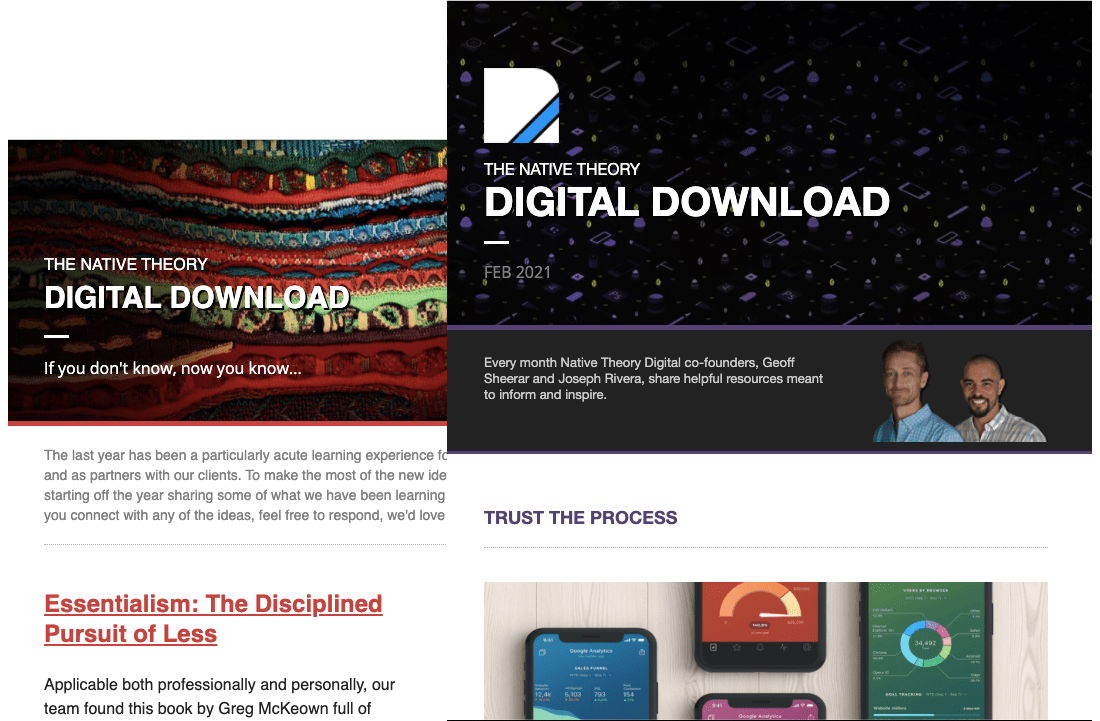Are you struggling to convert your website visitors into customers? Is your website lacking an effective call-to-action strategy? Look no further. In this article, we will show you how to increase your website’s ROI by integrating highly effective call-to-actions.
A call-to-action (CTA) is a powerful tool that can guide your visitors towards taking the desired action, whether it’s making a purchase, subscribing to your newsletter, or filling out a contact form. However, not all CTAs are created equal. To maximize your website’s conversion potential, you need to strategically design and implement CTAs that resonate with your audience.
Throughout this guide, we will provide you with step-by-step instructions and practical tips on how to create compelling CTAs that grab attention, generate leads, and drive sales. From choosing the right CTA design and placement to crafting persuasive copy and optimizing for mobile devices, we will cover it all.
What are call-to-actions (CTAs)?
A call-to-action (CTA) is a directive given to your website visitors that prompts them to take a specific action. It is an essential element of any successful marketing strategy as it guides your audience towards a desired goal. CTAs can be in the form of buttons, links, or even just text, but their main purpose is to encourage immediate action.
Effective CTAs are clear, concise, and compelling. They should clearly communicate the value proposition and benefits of taking the desired action. For example, a CTA on an e-commerce website could be “Buy Now” or “Add to Cart,” while a CTA on a blog could be “Subscribe Now” or “Read More.” The key is to create CTAs that resonate with your target audience and compel them to act.
The importance of effective CTAs
Effective CTAs play a crucial role in driving conversions and maximizing your website’s ROI. They act as signposts, guiding your visitors towards the next step in their customer journey. Without clear and compelling CTAs, your website visitors may feel lost or unsure of what to do next, resulting in missed opportunities and wasted marketing efforts.
By integrating effective CTAs into your website, you can increase engagement, generate leads, and ultimately drive more sales. A well-designed CTA can create a sense of urgency, instill trust, and communicate the value proposition of your product or service. It can be the difference between a lost lead and a loyal customer.
Understanding your target audience for effective CTAs
To create effective CTAs, you need to have a deep understanding of your target audience. Specifically, what are their pain points? What motivates them to take action? By understanding your audience’s needs and desires, you can tailor your CTAs to speak directly to them.
Start by creating buyer personas that represent your ideal customers. These personas should include demographic information, as well as insights into their goals, challenges, and preferences. By knowing who your audience is, you can create CTAs that resonate with their specific needs and aspirations.
With a solid grasp of who your target audience is, you can begin to craft Call-to-Actions (CTAs) that offer solutions to their pain points. For example, if your target audience is busy professionals looking to save time, your CTA could emphasize the time-saving benefits of your product or service.
Remember, effective CTAs are not one-size-fits-all. They should be tailored to your audience’s unique needs and motivations. By understanding your target audience, you can create CTAs that speak directly to them and increase the likelihood of conversion.
Types of CTAs and when to use them
There are various types of CTAs that you can use depending on your marketing goals and the stage of the customer journey.
Here are some common types of CTAs and when to use them:
- Direct CTAs: Direct CTAs are straightforward and leave no room for interpretation. They clearly communicate the desired action and are commonly used for e-commerce websites. Examples include “Buy Now,” “Add to Cart,” or “Get a Quote.” Direct CTAs are effective when you want to drive immediate conversions.
- Lead Generation CTAs: Lead generation CTAs are used to collect contact information from your website visitors. They are commonly used for newsletter sign-ups, free trials, or gated content. Examples include “Subscribe Now,” “Download the eBook,” or “Start your free trial.” Lead generation CTAs are effective when you want to capture leads and/or build your email list.
- Social Sharing CTAs: Social sharing CTAs encourage your website visitors to share your content on social media platforms. They can help increase your brand visibility and reach a wider audience. Examples include “Share on Facebook,” “Tweet this,” or “Pin it.” Social sharing CTAs are effective when you want to expand your social media presence and drive organic traffic.
- Secondary CTAs: Secondary CTAs are typically used as additional options for visitors who are not yet ready to take the primary action. They can be used to offer alternative actions or provide more information. Examples include “Learn more,” “See pricing options,” or “Contact us.” Secondary CTAs are effective when you want to provide more options and cater to different visitor intents.
It’s important to choose the right type of CTA based on your specific marketing goals and the desired action you want your visitors to take. Consider the stage of the customer journey and the context in which the CTA will be displayed to ensure maximum effectiveness.
Designing compelling CTAs
The design of your CTAs plays a crucial role in grabbing attention and enticing your website visitors to take action.
Here are some tips for designing compelling CTAs:
- Color and Contrast: Choose colors that stand out from the rest of your website’s design. Use high-contrast colors to make your CTAs visually striking and easy to spot. For example, if your website has a blue color scheme, use a red or orange CTA button to create contrast.
- Size and Shape: Make your CTAs large enough to be noticed but not too overwhelming. Experiment with different shapes, such as rounded corners or unique button styles, to make your CTAs visually interesting.
- Whitespace: Surround your CTAs with ample whitespace to make them stand out and reduce clutter. Whitespace helps draw attention to your CTAs and makes them more visually appealing.
- Typography: Use clear and legible fonts for your CTA copy. Avoid using overly decorative or difficult-to-read fonts. Make sure the text is large enough to be easily readable on both desktop and mobile devices.
When designing your CTAs, it’s important to strike a balance between creativity and usability. While it’s important to make your CTAs visually appealing, usability should always be the priority. Ensure that your CTAs are easy to click or tap on, especially on mobile devices, to provide a seamless user experience.
Placing CTAs strategically on your website
Where you place your CTAs on your website can significantly impact their effectiveness. Strategic placement ensures that your CTAs are visible, accessible, and relevant to your visitors.
Here are some key areas to consider when placing your CTAs:
- Above the Fold: Place your most important CTAs above the fold, which refers to the portion of the webpage that is visible without scrolling. This ensures that your CTAs are immediately visible to your visitors and encourages them to take action without having to navigate further down the page.
- End of Content: Place CTAs at the end of your blog posts or landing page content. This is a natural placement as visitors who have read your content are more likely to be engaged and interested in taking the next step.
- Sidebar or Navigation Bar: Incorporate CTAs in your sidebar or navigation bar for easy access. This allows visitors to take action regardless of their position on the page. Consider using sticky CTAs that scroll with the visitor as they navigate your website.
- Pop-ups and Overlays: Use pop-ups or overlays to grab attention and prompt action. However, be mindful of the timing and frequency of these pop-ups to avoid frustrating your visitors. Consider using exit-intent pop-ups that appear when a visitor is about to leave your website.
- Homepage and Landing Pages: Feature CTAs prominently on your homepage and landing pages. These are often the entry points for your website visitors, so make sure your CTAs are clear, compelling, and aligned with the visitor’s intent.
Remember to test different placements and monitor the performance of your CTAs. Analyze user behavior and engagement metrics to determine which placements are most effective for your specific audience and goals.
A/B testing your CTAs for optimal performance
A/B testing, also known as split testing, is a powerful technique that allows you to compare the performance of different CTAs to determine which one is more effective. By testing different elements such as copy, design, placement, and color, you can optimize your CTAs for maximum conversions.
Here are some key steps to follow when conducting A/B tests for your CTAs:
- Identify a Goal: Determine the specific goal you want to achieve with your CTA, such as increasing click-through rates or conversions. This will serve as the benchmark for comparing the performance of different variations.
- Create Variations: Develop multiple versions of your CTA, each with a distinct element you want to test. For example, you could test different colors, button sizes, or copy variations. Ensure that only one element is changed at a time to accurately measure its impact.
- Split Your Audience: Randomly divide your website visitors into two or more groups, with each group seeing a different version of the CTA. This ensures that your results are not biased by external factors.
- Measure and Analyze Results: Use analytic tools to monitor the performance of your variations. Focus on key metrics like conversion rates, click-through rates and bounce rates. Analyze the data to determine which variation performed better and achieved your desired goal.
- Implement and Iterate: Based on the results of your A/B test, implement the winning variation as your new CTA. If the results are inconclusive or unsatisfactory, iterate and test new variations until you achieve the desired outcome.
A/B testing is an ongoing process that helps you continuously optimize your CTAs for better performance. It allows you to make data-driven decisions and fine-tune your CTAs to maximize conversions and ROI.
Analyzing and optimizing CTAs for better ROI
Analyzing the performance of your CTAs is crucial for optimizing your marketing efforts and improving your website’s ROI. By tracking key metrics and analyzing user behavior, you can gain valuable insights into what is working and what needs improvement.
Here are some important metrics to consider:
- Click-Through Rate (CTR): CTR measures the percentage of visitors who clicked on your CTA. A high CTR indicates that your CTA is compelling and engaging, while a low CTR may indicate that your CTA needs improvement.
- Conversion Rate: Conversion rate measures the percentage of visitors who completed the desired action after clicking on your CTA. This could be making a purchase, filling out a form, or subscribing to your newsletter. A high conversion rate indicates that your CTA is effective in driving conversions, while a low conversion rate may indicate areas for improvement.
- Bounce Rate: Bounce rate measures the percentage of visitors who leave your website without taking any further action. A high bounce rate may indicate that your CTA or landing page is not aligned with visitor expectations or needs. Analyze the bounce rate to identify potential issues and make necessary improvements.
- Engagement Metrics: Monitor engagement metrics such as time spent on page, scroll depth, and heatmaps to understand how visitors interact with your CTAs and website. This data can help you identify areas where visitors are dropping off or losing interest, allowing you to make targeted optimizations.
Regularly analyze these metrics and compare them against your goals and benchmarks. Identify patterns, trends, and areas for improvement. Test different variations, iterate, and continue optimizing your CTAs to achieve better ROI and conversions.
Tools and plugins for creating and tracking CTAs
There are numerous tools and plugins available that can help you create, manage, and track your CTAs. These tools offer a range of features and functionalities to streamline your CTA creation process and provide valuable insights into their performance.
Here are some popular options:
- HubSpot: HubSpot offers a comprehensive suite of marketing tools, including a CTA builder and analytics dashboard. It allows you to create and customize CTAs, track their performance, and integrate them seamlessly into your website.
- OptinMonster: OptinMonster is a popular lead generation tool that offers a variety of CTA options, including slide-ins, pop-ups, and floating bars. It provides A/B testing capabilities, advanced targeting options, and integration with popular email marketing platforms.
- Unbounce: Unbounce is a landing page builder that offers a drag-and-drop interface for creating high-converting landing pages and CTAs. It provides A/B testing, analytics, and integration with popular marketing tools.
- Google Analytics: Google Analytics is a free web analytics tool that provides valuable insights into your website’s performance, including CTA tracking. Set up goals and conversions in Google Analytics to track CTA clicks and conversions, and gain a deeper understanding of user behavior.
- Crazy Egg: Crazy Egg is a heat mapping and A/B testing tool that helps you visualize user behavior and optimize your CTAs. It provides insights into where visitors are clicking, scrolling, and interacting with your website, allowing you to make data-driven improvements.
These are just a few examples of the many tools available. Research and explore different options to find the ones that best suit your specific needs and budget.
Conclusion
Effective call-to-actions (CTAs) are essential for maximizing your website’s ROI and driving conversions. By strategically designing and implementing compelling CTAs, you can guide your website visitors towards taking the desired action and achieve your marketing goals.
Ultimately, the success of your CTAs—and by extension, your website’s ROI—relies on your ability to engage your audience with clear, compelling calls to action that resonate with their needs and motivations.
Keep refining your approach based on analytics and user feedback to ensure that your CTAs remain effective over time. By prioritizing the user experience and maintaining a focus on continuous improvement, you can turn your website into a powerful tool for achieving your business objectives.
Don’t let your website’s potential go untapped. Start utilizing effective call-to-actions today and watch your ROI soar.



